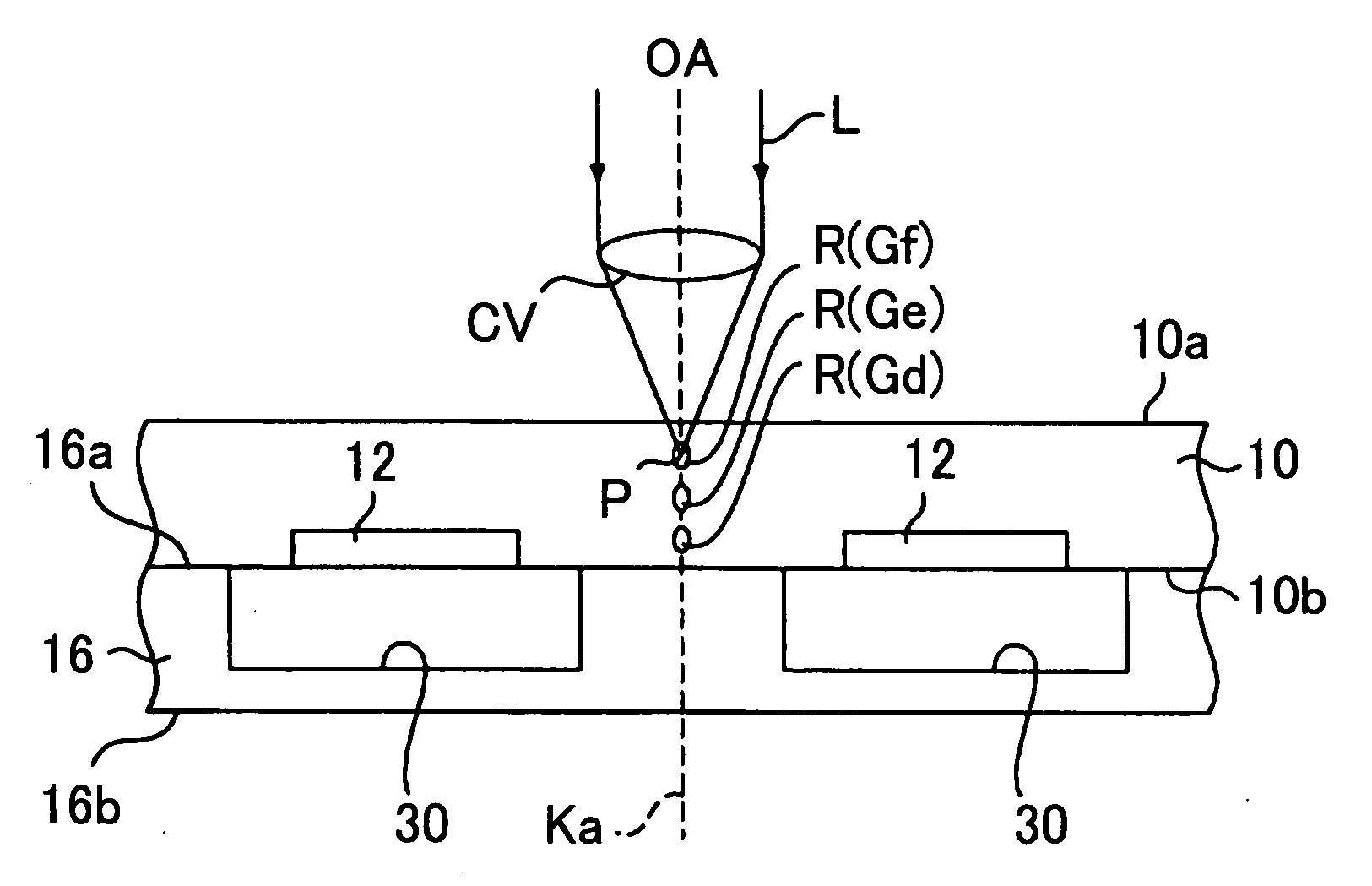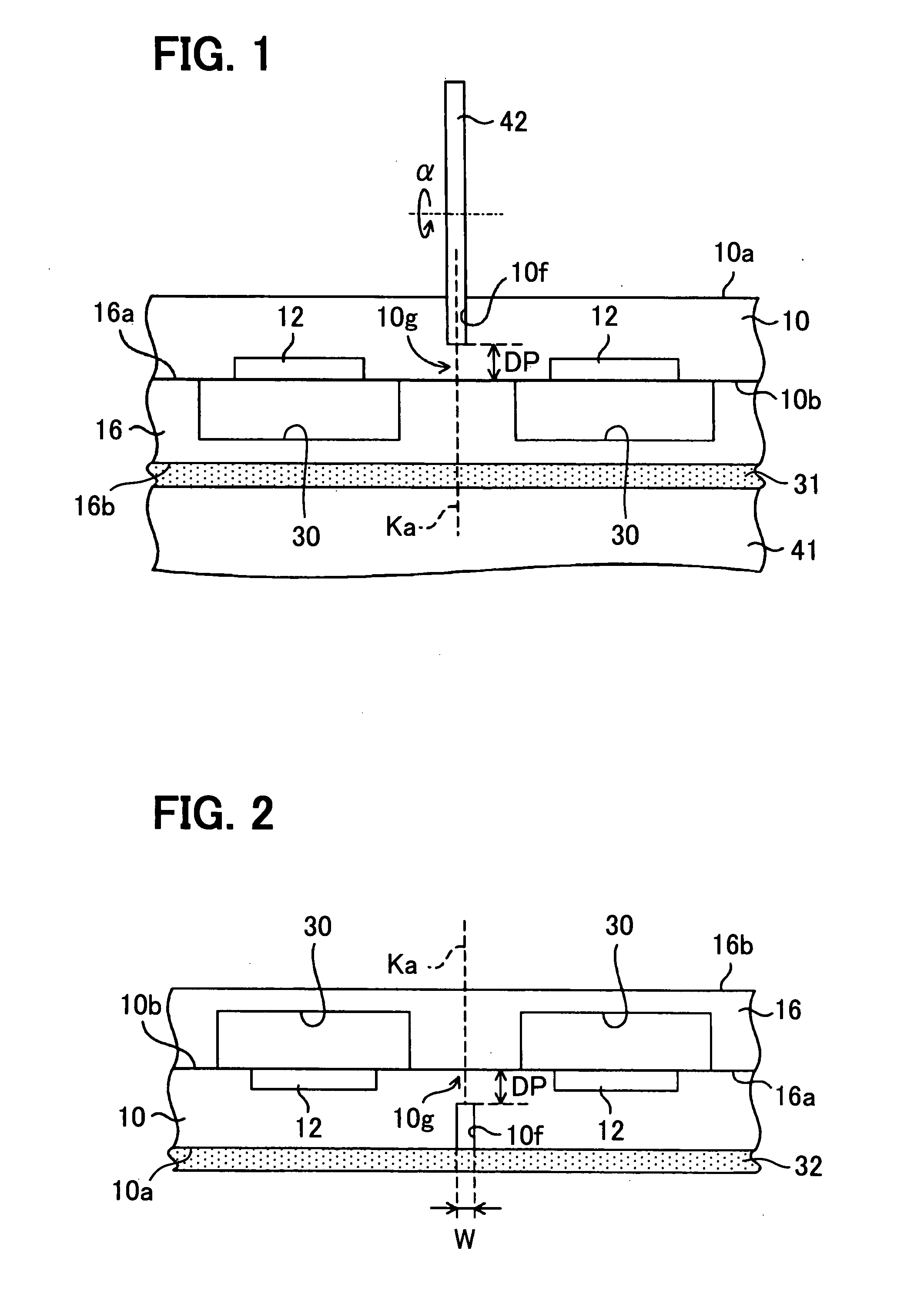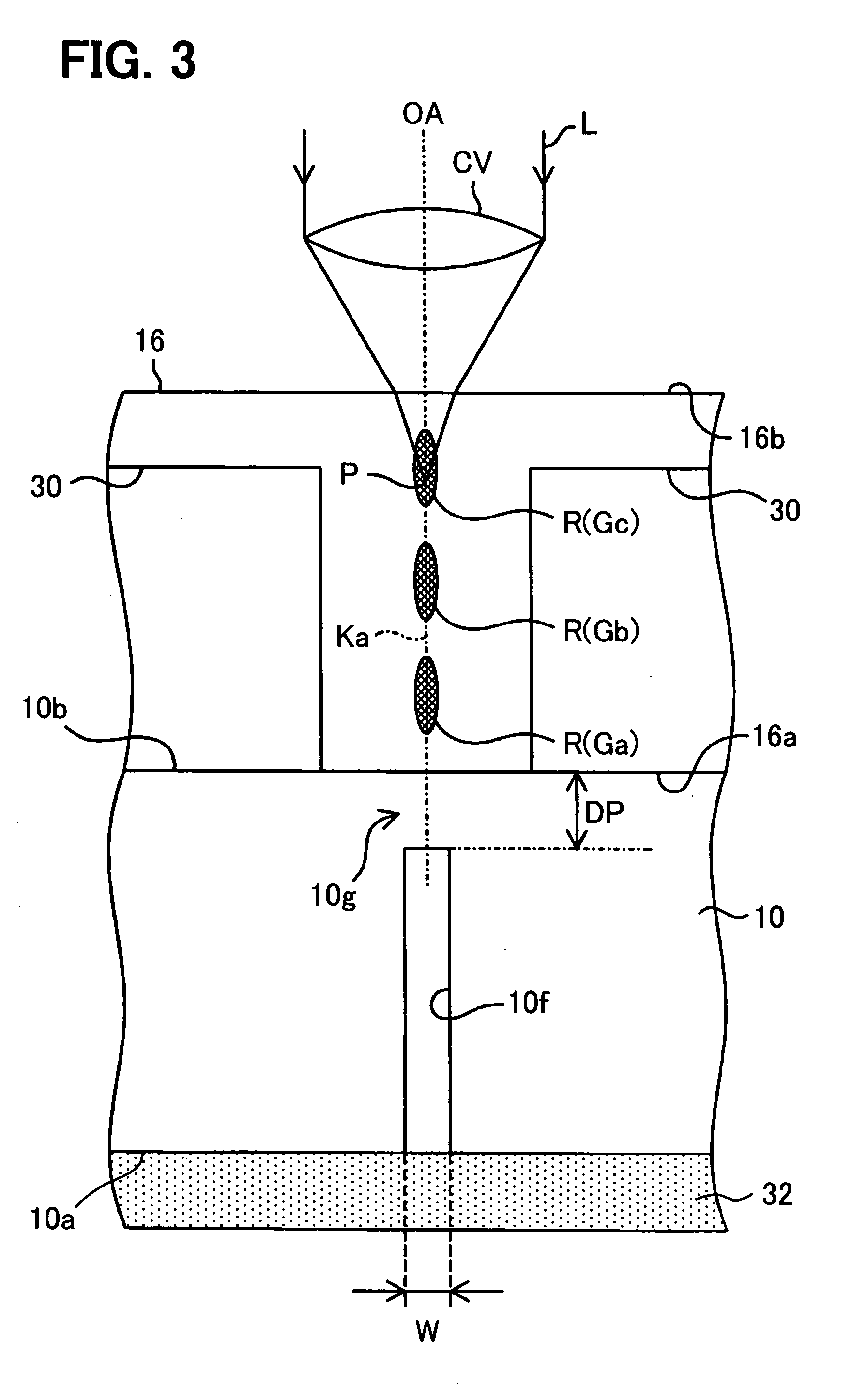Chip and method for dicing wafer into chips
- Summary
- Abstract
- Description
- Claims
- Application Information
AI Technical Summary
Benefits of technology
Problems solved by technology
Method used
Image
Examples
first embodiment
[0061]FIGS. 1 to 5 show a method for cutting a wafer 10 along with a cutting line Ka.
[0062]FIG. 1 shows a first step of the method for cutting the wafer 10. Firstly, a sealing film 31 is bonded to the surface 16b of the cap portion 16. Then, the backside 10a of the wafer 10 turns up, and the surface 16b of the cap portion 16 turns down. The wafer 10 is mounted on a stage 41, i.e., a specimen support of a blade dicing device so that the sealing film 31 contacts the top of the stage 41.
[0063]Then, a dicing blade 42 having a diamond abrasive grain embedded in the dicing blade 42 is rotated with high speed in a direction shown as a in FIG. 1. The rotating blade 42 press-contacts the backside 10a of the wafer 10 along with the cutting line Ka.
[0064]Thus, the wafer 10 is partially cut from the backside 10a so that a notch 10f is formed on the backside 10a of the wafer 10.
[0065]Then, the sealing film 31 is removed from the surface 16b of the cap portion 16. At this time, the wafer 10 is no...
second embodiment
[0116]FIGS. 6 to 8 show a dividing step of the wafer 10 according to a second embodiment.
[0117]FIG. 6 shows a first step. The backside surface 10a of the wafer 10 turns up, and the wafer 10 is mounted on the laser beam processing device.
[0118]The laser beam processing device irradiates the laser beam L in a pulse manner on the backside surface 10a of the wafer 10 and focuses at the focus point P in the wafer 10. Further, the reforming regions R are formed in the wafer 10 along with the cutting line Ka by the multi photon absorption effect. The focus point P is displaced relative to the wafer 10, so that one reforming layer Gd-Gf composed of multiple reforming regions R is formed in the wafer 10. The reforming regions R in the one reforming layer Gd-Gf are arranged at predetermined intervals along with a predetermined horizontal direction parallel to the surface 10b and the backside surface 10a of the wafer 10.
[0119]The depth of the focus point P in the wafer 10 is changed in a stepw...
third embodiment
[0134]FIGS. 9 and 10 show a dividing step of the wafer 10 according to a third embodiment.
[0135]FIG. 9 shows a first step. The dicing film 32 is bonded to the surface 16b of the cap portion 16.
[0136]Then, the wafer 10 is mounted on the stage of the laser beam processing device under the condition that the backside 10a of the wafer 10 turns up.
[0137]The laser beam processing device forms the reforming layers Ga-Gc in the cap portion 16. Then, similar to the first step shown in FIG. 6, the reforming layers Gd-Gf are formed in the wafer 10.
[0138]FIG. 10 shows a second step. Similar to the fourth step shown in FIG. 5, the dicing film 32 is expanded in the horizontal direction γA-γB perpendicular to the cutting line Ka. Thus, the tensile stress is applied to the reforming layers Ga-Gf. Firstly, the cap portion 16 is cut and separated. Then, the wafer 10 is cut and separated. Accordingly, the chip 11 is separated from the wafer 10.
[0139]In FIG. 9, after the reforming layers Ga-Gc are form...
PUM
| Property | Measurement | Unit |
|---|---|---|
| Thickness | aaaaa | aaaaa |
| Semiconductor properties | aaaaa | aaaaa |
Abstract
Description
Claims
Application Information
 Login to View More
Login to View More - R&D
- Intellectual Property
- Life Sciences
- Materials
- Tech Scout
- Unparalleled Data Quality
- Higher Quality Content
- 60% Fewer Hallucinations
Browse by: Latest US Patents, China's latest patents, Technical Efficacy Thesaurus, Application Domain, Technology Topic, Popular Technical Reports.
© 2025 PatSnap. All rights reserved.Legal|Privacy policy|Modern Slavery Act Transparency Statement|Sitemap|About US| Contact US: help@patsnap.com



